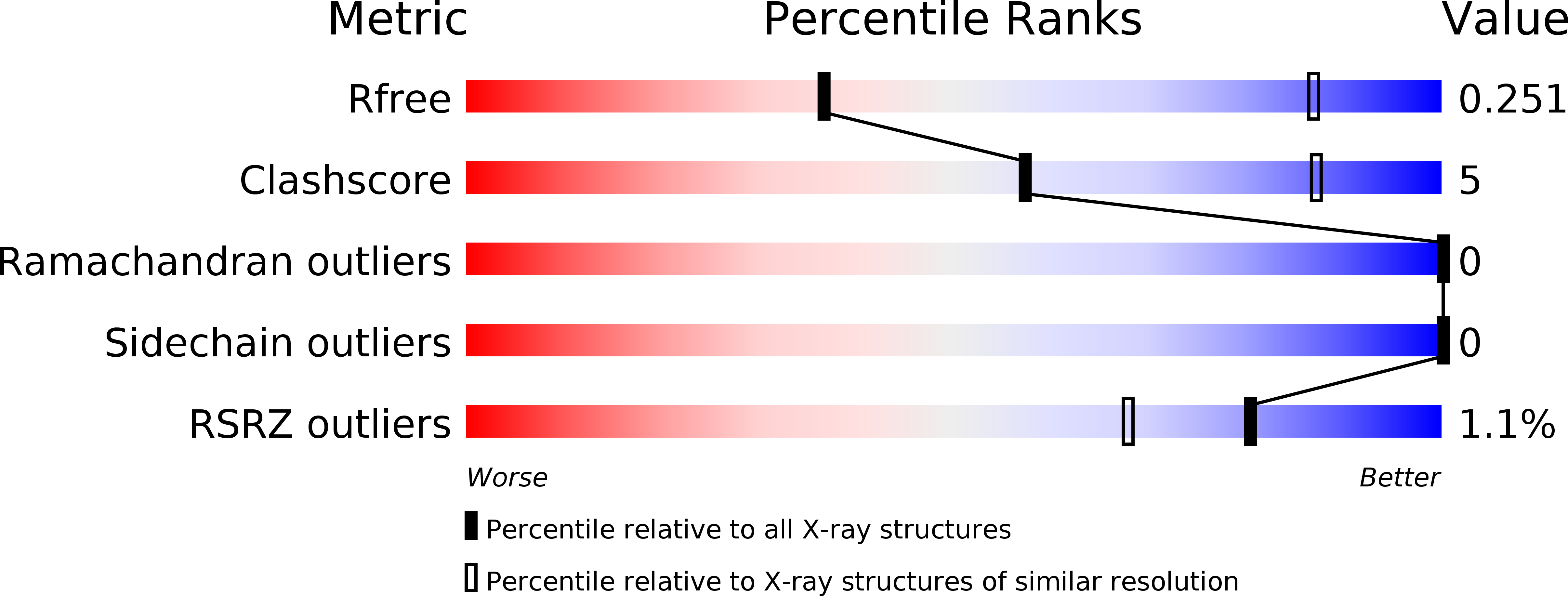
Deposition Date
2019-05-17
Release Date
2019-06-19
Last Version Date
2023-10-11
Entry Detail
PDB ID:
6P0T
Keywords:
Title:
Crystal structure of ternary DNA complex "FX(1-2)-1Xis" containing E. coli Fis and phage lambda Xis
Biological Source:
Source Organism:
Escherichia coli (Taxon ID: 83333)
Escherichia phage lambda (Taxon ID: 10710)
Escherichia coli (Taxon ID: 562)
Escherichia phage lambda (Taxon ID: 10710)
Escherichia coli (Taxon ID: 562)
Host Organism:
Method Details:
Experimental Method:
Resolution:
3.60 Å
R-Value Free:
0.24
R-Value Work:
0.19
R-Value Observed:
0.20
Space Group:
P 43 21 2


